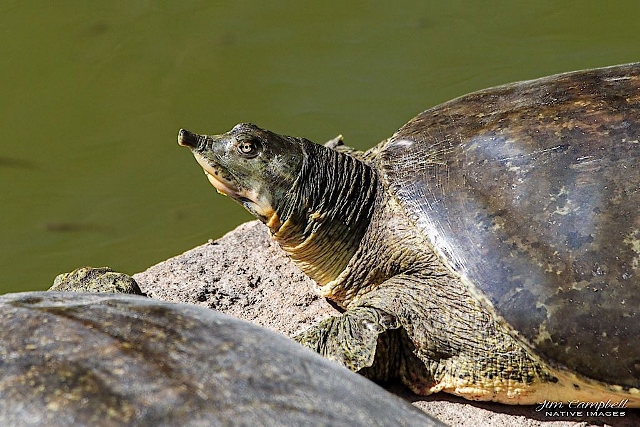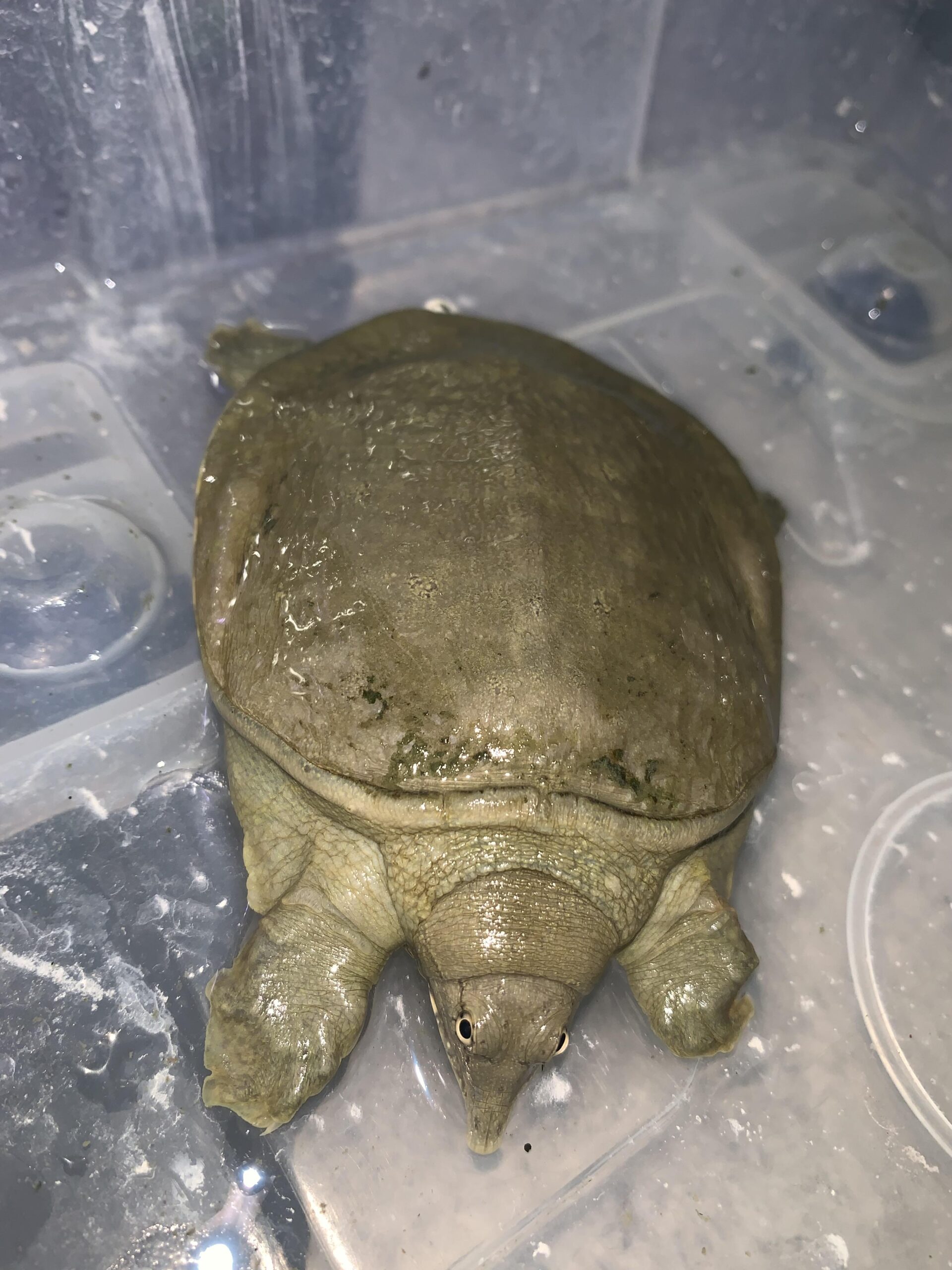Softshell turtles are considered invasive species due to their ability to rapidly adapt and reproduce in non-native environments. Invasive species like softshell turtles have negative impacts on native ecosystems, outcompeting and displacing native species.
Their aggressive feeding behavior, ability to survive in various habitats, and lack of predators in new environments contribute to their invasive nature. As a result, softshell turtles often disrupt the natural balance of ecosystems and cause ecological harm.

Credit: species.wikimedia.org
Characteristics Of Softshell Turtles
Softshell turtles have specific characteristics that differentiate them from other turtle species. These unique features, such as their lack of a hard shell and their ability to live in various environments, make them successful invaders in certain regions.
Characteristics of Softshell TurtlesPhysical characteristics: Softshell turtles are named for their soft, leathery shells that lack the hard, bony plates found in other turtle species. They have a streamlined body shape, a long neck, and a flat, pancake-like head. Their shells can vary in color from gray and brown to olive and black, allowing them to blend in with their surroundings. Softshell turtles have webbed feet, which are adapted for swimming in both fresh and brackish water. Habitat requirements: Softshell turtles are highly adaptable and can be found in a variety of aquatic habitats, including rivers, lakes, ponds, and marshes. They prefer shallow water with muddy or sandy bottoms, as these provide ample hiding spots and prey opportunities. Softshell turtles are mainly active during the daytime, basking on logs or riverbanks to warm themselves in the sun. They are also excellent swimmers and can move quickly in the water. In summary, softshell turtles have unique physical characteristics such as their soft shells and streamlined body shape. They are adaptable and thrive in various aquatic habitats, using their webbed feet for swimming and basking in the sun to regulate their body temperature.Impacts Of Softshell Turtles As Invasive Species
Ecological impacts:
Softshell turtles, when introduced to new habitats outside their native range, can have significant ecological impacts. They are skilled predators, known to feed on various aquatic organisms such as fish, amphibians, and small invertebrates. This voracious predator behavior can disrupt the balance of freshwater ecosystems by reducing prey populations and potentially driving certain species to extinction. Additionally, softshell turtles are known to alter habitats by digging nests in sandy areas, leading to erosion and affecting the breeding success of other species.Economic impacts:
The presence of softshell turtles as invasive species can also have economic implications. For instance, softshell turtles’ feeding habits can negatively affect commercial fish populations, causing declines in fish yields and impacting the fishing industry. Furthermore, their tendency to dig nests along beaches and riverbanks can damage infrastructure, such as beach erosion, requiring costly restoration and maintenance efforts.Social impacts:
Invasive softshell turtles can also have social impacts. Their aggressive behavior and large size can pose risks to humans engaging in recreational activities such as swimming, boating, or fishing. Moreover, the presence of invasive species may evoke public concern and debates regarding wildlife management, conservation, and the allocation of resources for control and eradication efforts. Overall, the introduction of softshell turtles as invasive species can have ecological, economic, and social consequences, highlighting the importance of effective management strategies to mitigate their impacts and protect native ecosystems.Management And Control Of Softshell Turtles
Softshell turtles can become invasive species if not managed properly. Prevention measures are essential to minimize their impact on the ecosystem. One effective strategy is to raise awareness among individuals who keep turtles as pets. Encouraging responsible pet ownership by providing education on the potential consequences of releasing softshell turtles into the wild is crucial.
In addition to prevention, control strategies must be implemented to mitigate the spread of softshell turtles. This can involve the removal or relocation of turtles from areas where they are not native. Trapping methods can be employed, utilizing bait to attract and capture them. Monitoring and surveillance of softshell turtle populations can help identify high-risk areas and prompt action.

Credit: rgvctmn.org

Credit: californiaherps.com
Conclusion
To wrap up, it’s evident that softshell turtles can be considered invasive species in certain areas. Their ability to rapidly reproduce and compete with native species for resources poses a threat to the ecosystem. It’s crucial for authorities and individuals to take measures to prevent the spread of softshell turtles to protect the delicate balance of biodiversity.
Awareness, education, and proper regulations are the key to managing this potential issue effectively.





